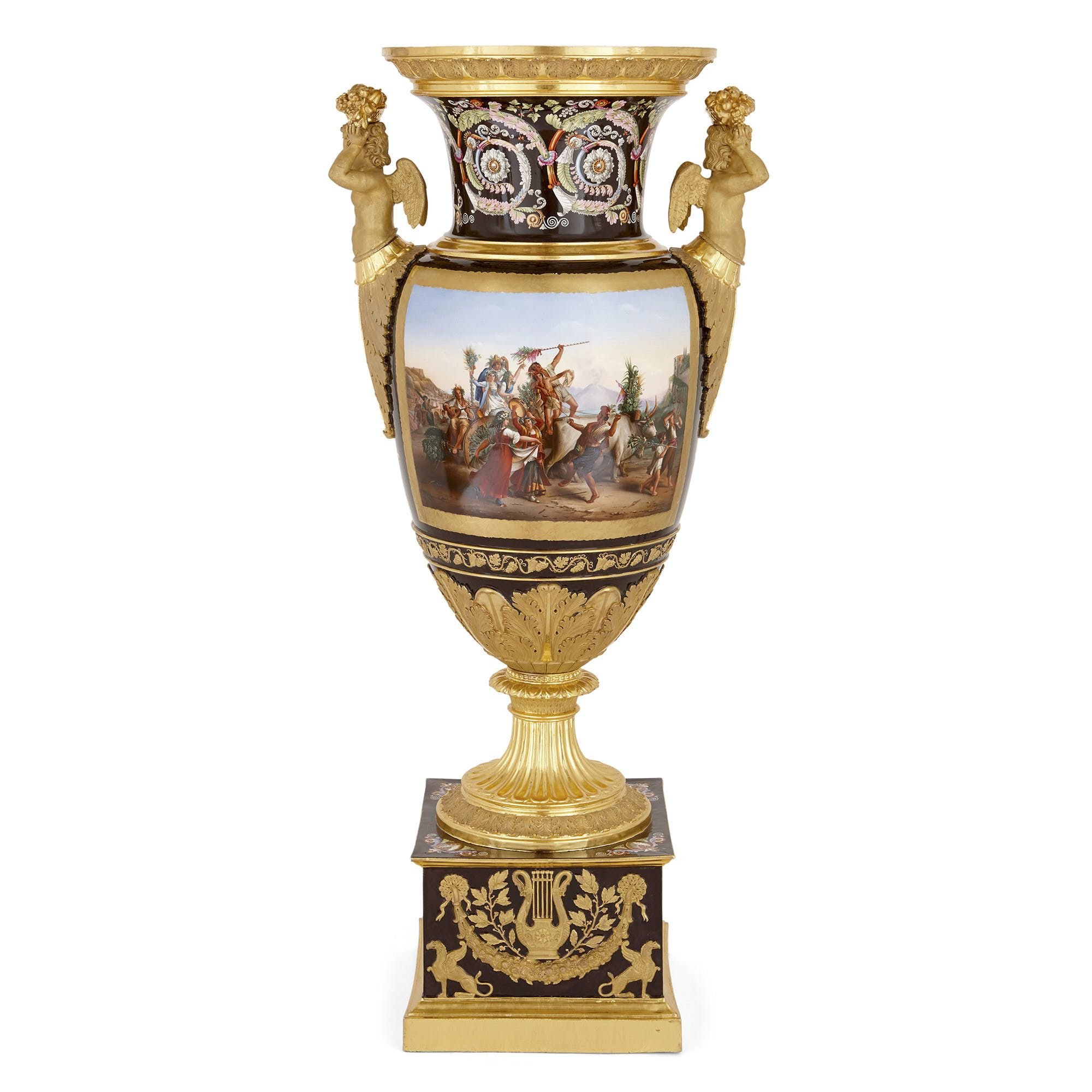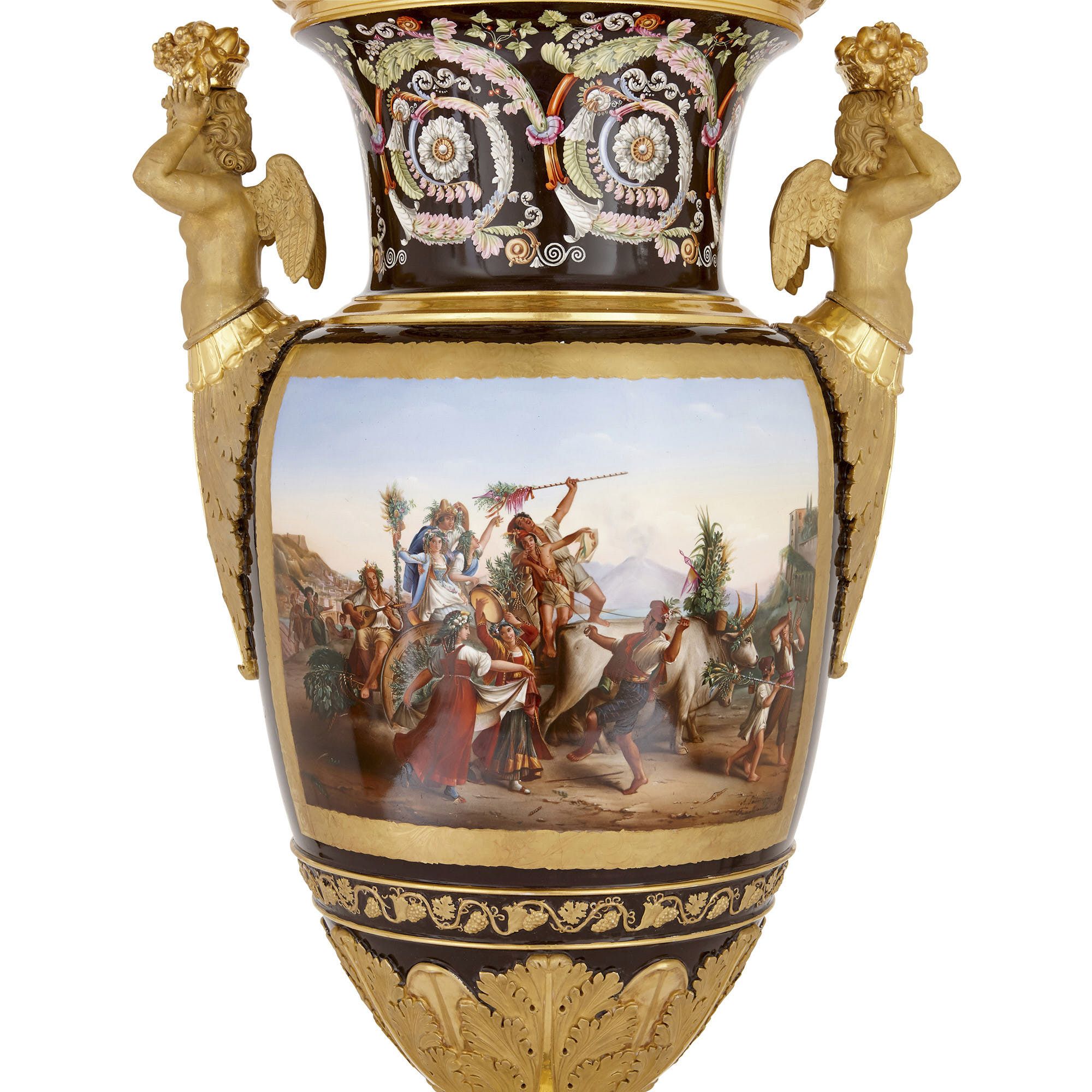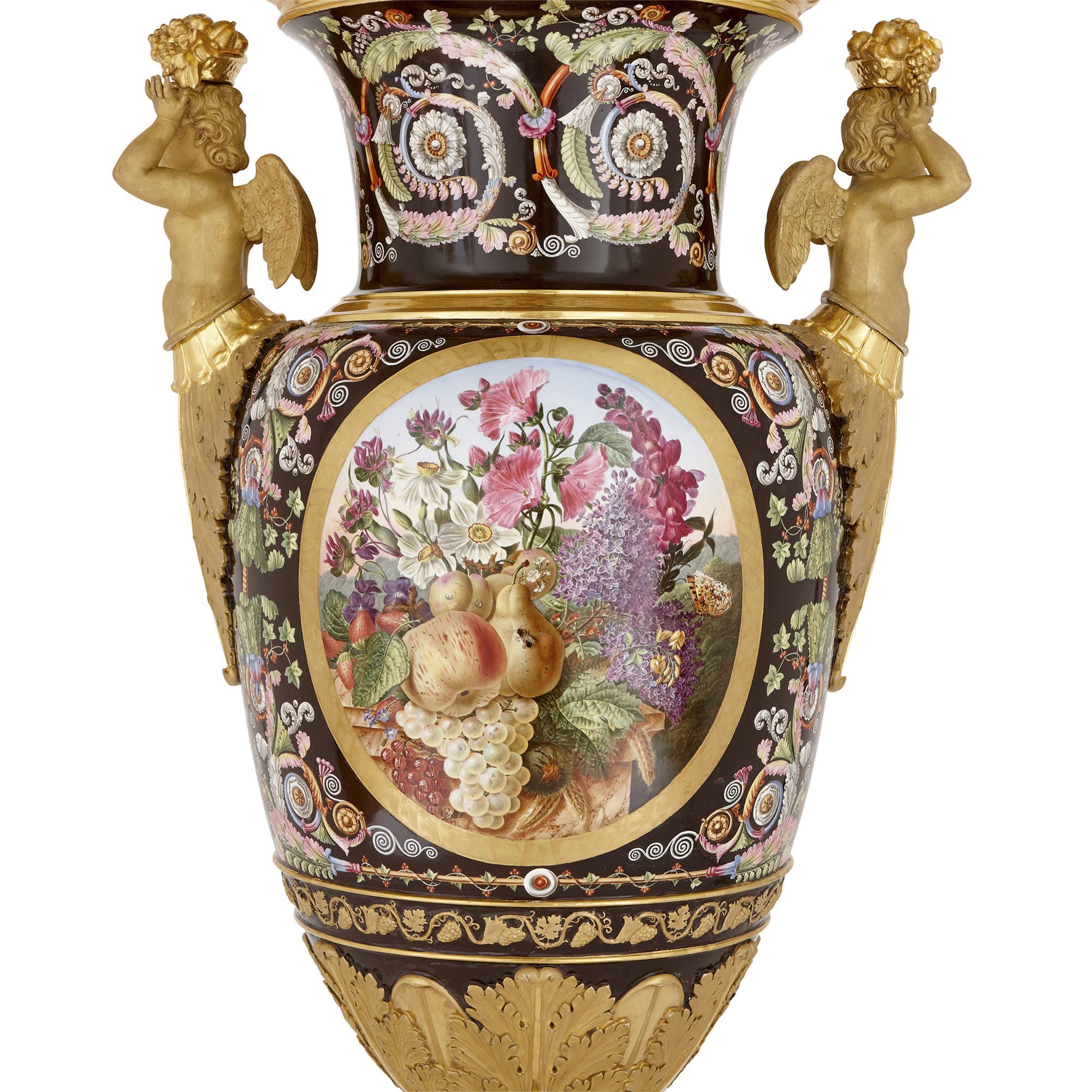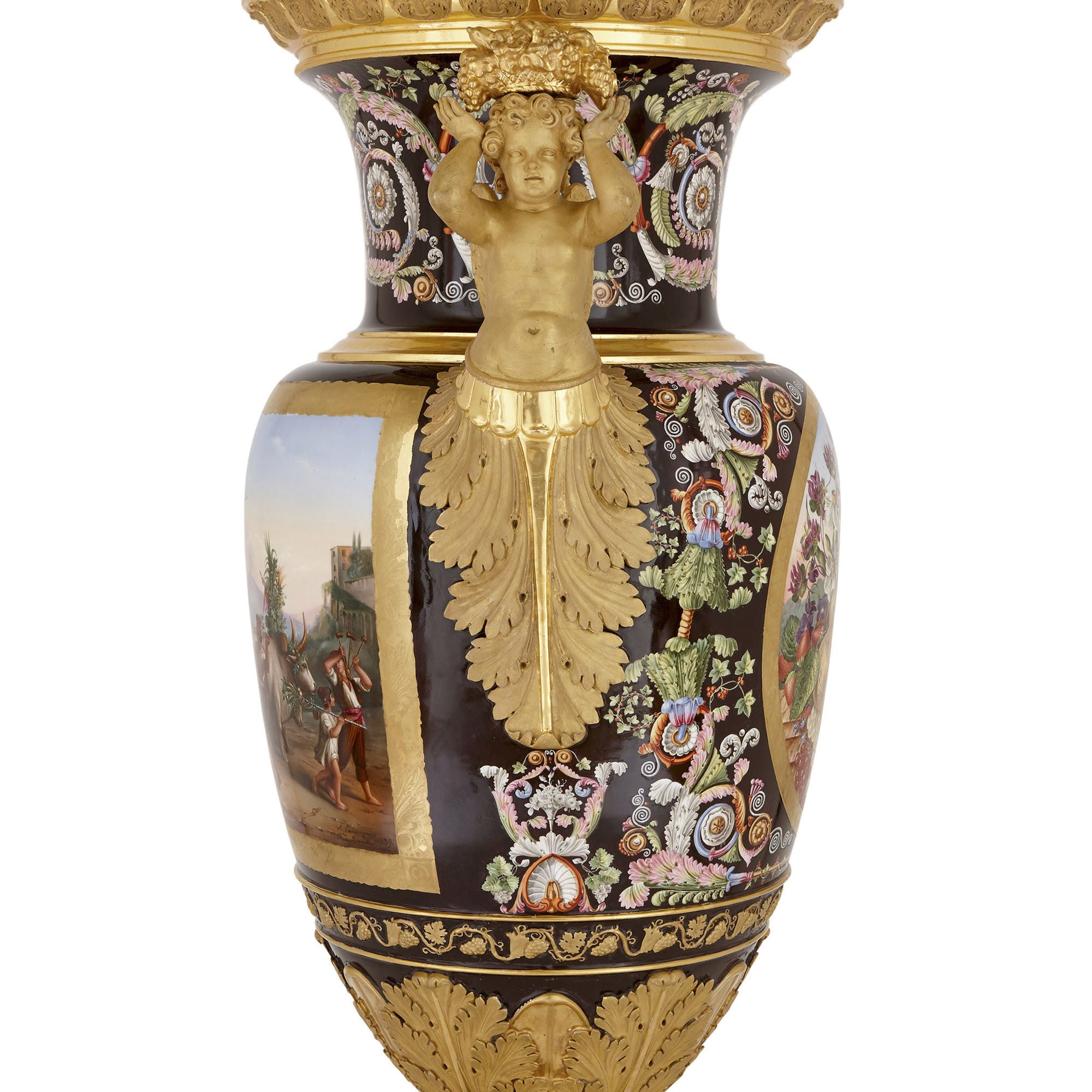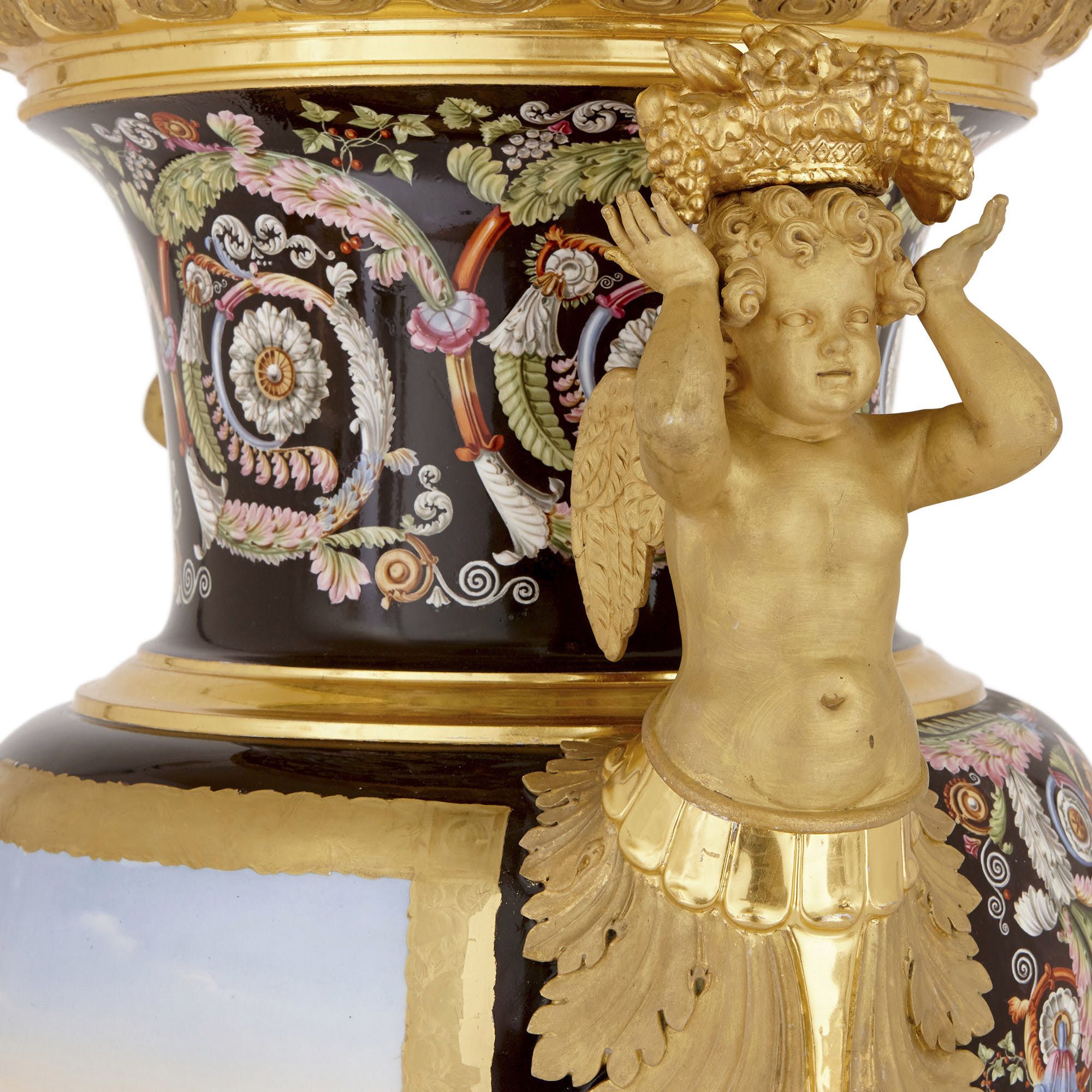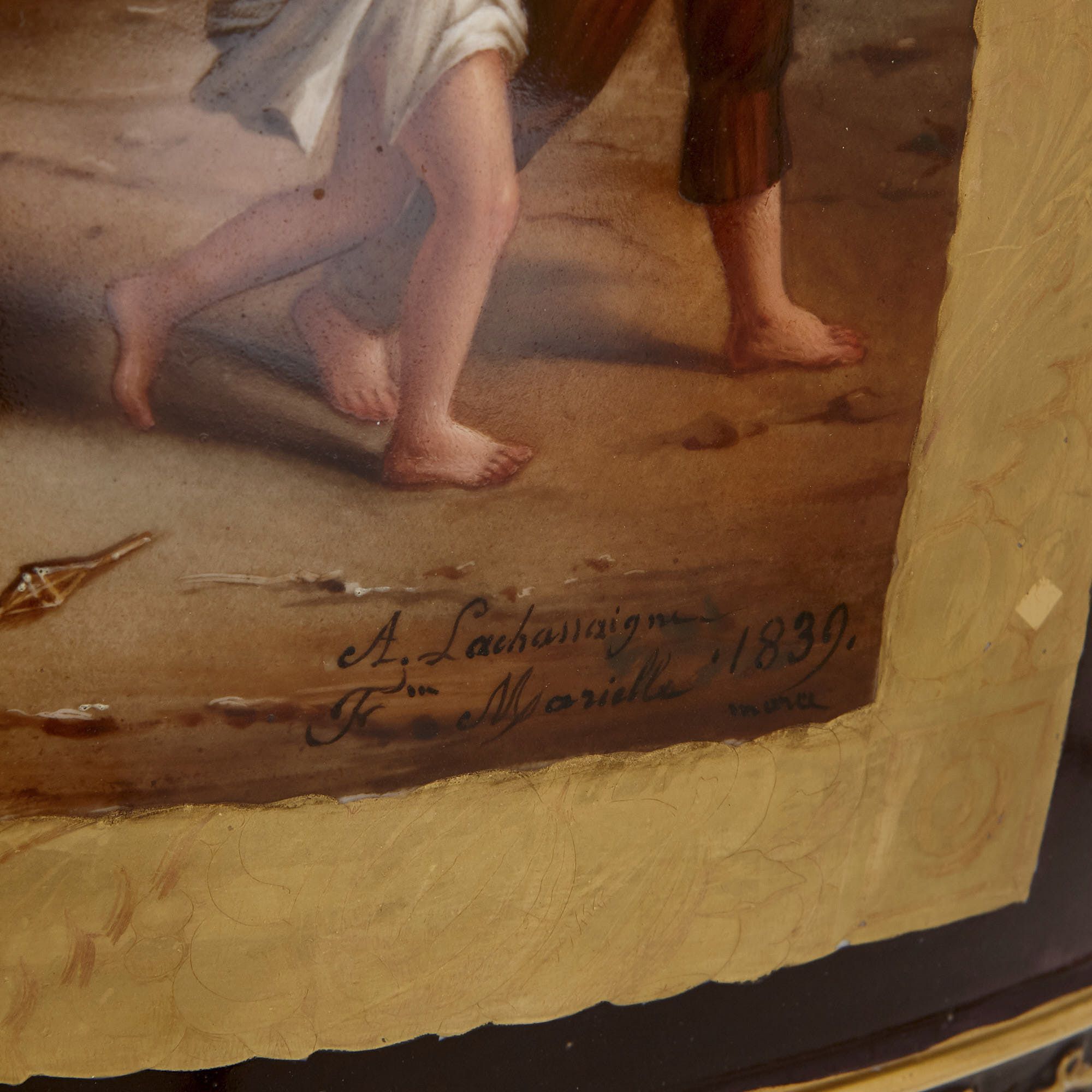This large and impressive porcelain vase was produced in Paris in 1839. The vase is of ovoid form, the elongated shape of its body resembling the ideal of the classical volute krater. The body of the vase is profusely and beautifully parcel gilt and painted with polychrome motifs in the manner characteristic of so-called ‘Paris porcelain’ pieces.
The vase is supported by an architecturally formed square porcelain podium. Each side of the podium is elaborately ornamented, the decorative elements set above the purple-brown ground of the porcelain. Two sides, opposite one another, feature an assemblage of classicising motifs wrought from parcel gilt encrusted porcelain. A foliate swag, laden with fruit and draped from twin ribbon-tied rosettes, supports a lyre flanked by laurel branches. To either side of the swag are twin stylised griffons, portrayed in profile. The two other sides of the podium are painted: one side depicts Ceres, the Roman goddess of agriculture, reclining in a pastoral landscape atop a bed of freshly harvested grain, the painting contained by a rectangular parcel gilt cartouche. The opposite side is painted with a still life of ripe fruit and flowers in bloom, encompassed by a circular cartouche. The latter work, the still life, is indistinctly signed and dated 1839.
The podium supports a socle, which in turn holds the body of the vase. The porcelain socle, profusely gilt, is gadrooned and embossed with acanthus leaf and egg-and-dart motifs at top and bottom. The socle appears the support the belly of the vase with grasping palmettes, also crafted from parcel gilt raised porcelain. The shoulder of the vase is mounted with twin porcelain handles, each one formed from a gilt cherub holding overhead a basket laden with fruit, the cherub springing from an acanthus leaf form mount.
To the front of the vase, contained by a rectangular gilt cartouche, is a painting after Louis Léopold Robert’s ‘The Pilgrimage of the Madonna of the Arch’, the original executed in 1827. Robert's painting was exhibited in the Paris Salon of 1827 to great acclaim and was subsequently acquired by Louis Philippe for the State collection. Robert’s composition portrays a procession of pilgrims, with Naples and smouldering Vesuvius in the background. The work symbolises the season of spring—the pilgrimage to the Madonna of the Arch traditionally occurring on Pentecost Sunday. The copy on this vase is by the celebrated porcelain painter Louis-Ferdinand Lachassaigne, dated to 1839, who worked in Paris between 1825 and 1851, exhibiting at the Salon several times. One vase painted by Lachassiagne, like the present piece in many respects, is currently held in the collection of the Petit Palais. Lachassaigne employs an extremely refined and delicate style, producing exceptionally fine painting.
The reverse of the vase is painted with a scene of ripe fruit and a bouquet of flowers, executed by the same artist who painted the similar still life on the podium of the vase, the picture likewise signed indistinctly and dated to 1839. The remainder of the purple-brown ground of the vase is profusely decorated with delicately coloured floral and foliate motifs, wrought into beautiful and elaborate scrolled forms, the effect of which is to signify abundance. The wide, flared neck of the vase is likewise decorated with painted motifs, the neck culminating in a gilt rim.
The entire vase is beautifully decorated: the painted scenes are exquisitely executed, and the floral and foliate motifs that ornament the surface are joyfully composed, painted with fresh greens, pinks, and blues. Distinctly classical in feeling, the theme of the decorative scheme that defines the vase might be described as fecundity: spring is celebrated by the Lachassaigne painting, the autumn harvest by Ceres on her bed of grain, and the fruits and produce of the earth by the abundant references to ripe fruit and flowers in fresh bloom.





